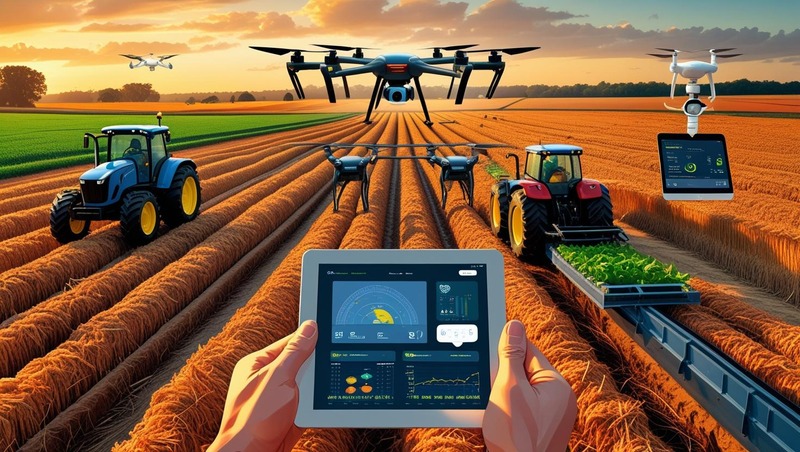In the rapidly evolving landscape of modern agriculture, data analytics has emerged as the true engine behind precision farming’s efficiency gains. Moving beyond traditional intuition, today’s farmers are harnessing vast streams of data to make informed, granular decisions that optimize every aspect of their operations, leading to higher yields, reduced costs, and enhanced sustainability.
Transforming Raw Data into Actionable Insights
The foundation of precision farming is data collection, sourced from a multitude of technologies: IoT sensors embedded in the soil, drones equipped with advanced cameras, satellite imagery providing broad-acre views, GPS-guided machinery, and even historical farm records. However, raw data alone holds limited value. This is where data analytics steps in, acting as the crucial interpreter.
Download PDF Brochure @ https://www.marketsandmarkets.com/pdfdownloadNew.asp?id=1243

Data analytics involves sophisticated processes of collecting, cleaning, contextualizing, overlaying, and analyzing this heterogeneous data. It employs statistical models, machine learning algorithms, and artificial intelligence to uncover patterns, trends, and correlations that would be impossible to detect manually. For instance, by combining soil moisture data with hyper-local weather forecasts and crop growth models, analytics can precisely determine irrigation needs, preventing both over-watering and under-watering. Similarly, analyzing multispectral drone imagery alongside historical pest outbreak data can predict potential infestations before they become widespread, enabling targeted and early intervention.
Optimizing Resource Allocation and Minimizing Waste
One of the most significant contributions of data analytics to precision farming efficiency is its ability to optimize resource allocation. Traditionally, fertilizers, pesticides, and water were applied uniformly across fields, leading to significant waste and environmental impact. Data analytics facilitates Variable Rate Technology (VRT), where inputs are applied precisely based on the specific needs of different zones within a field.
GIS-generated maps, powered by analytical insights, dictate how much seed, fertilizer, or pesticide each section of a field requires, eliminating unnecessary applications. This not only reduces input costs for farmers but also minimizes chemical runoff into water sources and lowers greenhouse gas emissions, fostering a more environmentally responsible agricultural system. The ability to apply resources exactly where and when they are needed translates directly into higher resource efficiency and a reduced environmental footprint.
Enhancing Decision-Making and Risk Mitigation
Data analytics empowers farmers with a level of decision-making capability that was previously unimaginable. Predictive analytics, a key component, uses historical and real-time data to forecast future outcomes. This includes highly accurate yield predictions, which allow farmers to better plan for harvests, storage, and market sales. It also extends to forecasting potential crop diseases or pest outbreaks, giving farmers a critical head start in implementing preventative or remedial measures.
Beyond daily operations, data analytics aids in long-term strategic planning. By analyzing years of yield data, soil health trends, and weather patterns, farmers can make informed decisions about crop rotation, optimal planting times, and even which crop varieties are best suited for specific parts of their land. This data-driven approach significantly mitigates risks associated with climate variability, market fluctuations, and unforeseen agricultural challenges, ensuring greater resilience and profitability for farming enterprises.
Driving Continuous Improvement and Sustainability
The iterative nature of data analytics ensures continuous improvement in farming practices. Each season’s data contributes to a growing knowledge base, refining predictive models and optimizing recommendations for the next cycle. This feedback loop allows farmers to constantly fine-tune their approaches, learning from past outcomes to achieve increasingly higher levels of efficiency and productivity.
In essence, data analytics is transforming farms into intelligent, self-optimizing systems. By providing deep insights into field conditions, crop health, and environmental factors, it enables farmers to make smarter, faster, and more sustainable decisions. This fundamental shift towards data-driven agriculture is not just about boosting yields; it’s about building a more resilient, profitable, and environmentally responsible food production system for the future.